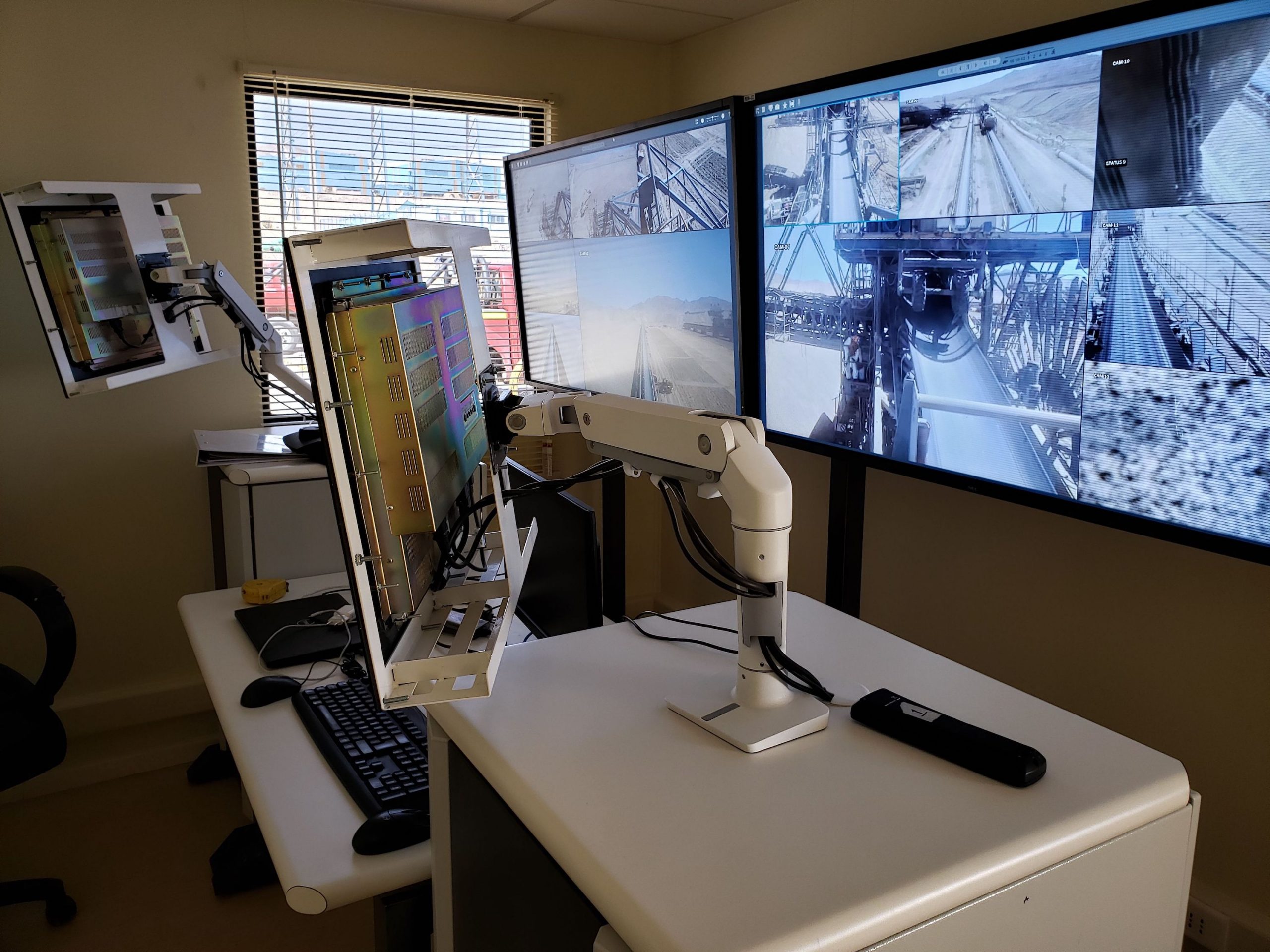Codelco is a state-owned Chilean conglomerate. It is the world’s single biggest copper producer, controlling about 20 percent of total global reserves. Minera Radomiro Tomic (RT) has an open-pit operation that is a benchmark in the international copper market for its modern and efficient management and the results achieved by its process. It extracts oxidized minerals and produces electro-obtained cathodes with 99.9% copper. The mine’s dynamic stacking area has dimensions of 1,200 meters by 400 meters where it operates the mineral stacker. Its peer, the bucket wheel, is South America’s largest.
The presence of people in the heap leach vicinity poses a significant risk to employees’ health. There are direct effects of the acid, such as burns and irritation in the respiratory tract caused by acid vapours, and indirect effects through accidents caused by moving structures.
CODELCO was seeking to eliminate the exposure of employees from the risks caused by the operation of the spreader in RT, and at the same time, improve productivity.
Challenge
- Design and implement a turnkey solution to make remote stacker operations viable. The project had to be carried out while it was in operation. Therefore, the time restrictions for intervention were very significant.
SK Godelius was requested to develop a new wireless network, following the specification that communications towers should be fed by solar-powered energy.
Solution
Development of a customized teleoperated operations centre where workers operate the stacker from this new site.
- Design and building of a remote operations console.
- Video system with multiple high-definition cameras on the stacker.
- Specialized wireless network for data transport.
- Developing and integrating remote control and security routines into the native control devices (PLC) of the stacker.
The turnkey project redefined the control logic of the machine. It also involved constructing telecommunications networks with low latency, high availability, and high bandwidth, capable of transporting multiple high-definition video and automatic control signals. The robustness of the solution was achieved through mesh network functionalities with redundant directional links. Furthermore, a new solution of video cameras was incorporated, including new compression technology, resulting in less bandwidth consumption and even less latency in rugged hardware capable of working in desert environmental conditions. All connectors were chosen and installed to stand relevant vibrations, as well as the corrosive atmosphere. A corrosion-resistant epoxy paint was applied in mounting supports, and all connections had to be sealed. An electronic and electromechanical workshop was installed at Godelius’ facilities in Calama, which supplied the assembly and configuration teams.
Result
- A radical improvement in safety and productivity through the stacker’s teleoperation results in fully satisfied end-users, managers, and sponsors.
By the second semester of 2020, an ongoing SK Godelius remote service was delivered, guaranteeing the pandemic’s operational continuity.







